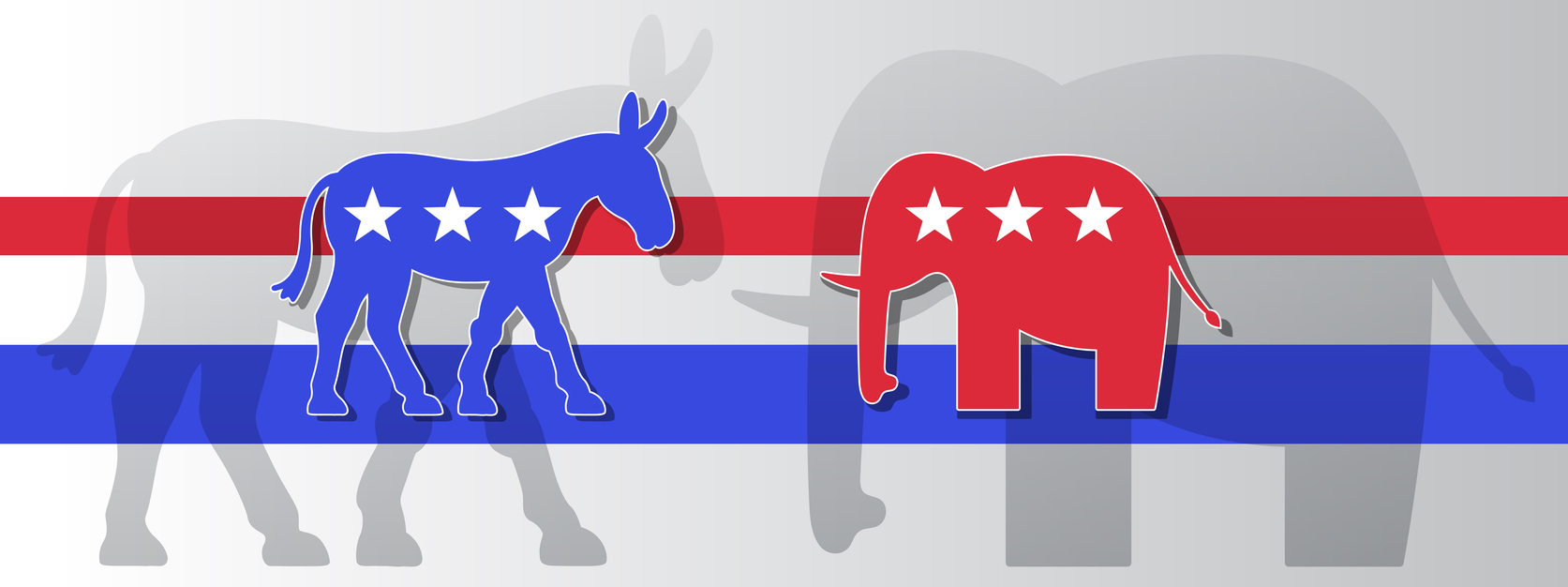| By Carol Brennan |
Every four years, the US presidential election season enters into its dramatic 15-week final stretch, a phase that starts with the first of two nominating conventions from the two major parties. Since 1956, both the Democratic and Republican leadership have followed an unwritten rule that allows the party whose candidate is not currently in the White House to hold their convention first. The scheduling of both conventions in the months of July and August is a relatively recent tradition as well, one that owes a debt to the advent in the 1940s of large air-conditioned venues like Chicago’s International Amphitheatre, host of both the 1952 Democratic and Republican conventions, which were also the first to be broadcast live on television.
In July of 2024, small-business owners and the hospitality sector of Milwaukee could thank their city’s first elected Black mayor, Cavalier Johnson (born 1986), for landing the Wisconsin city as host of the Republican National Convention. The 2024 Republican National Committee chair is Mike Johnson (born 1972), the Louisiana Republican who became Speaker of the US House of Representatives in 2023. Featured speakers at the 2024 convention included former South Carolina governor Nikki Haley (born 1972), Arkansas governor Sarah Huckabee Sanders (born 1982), Alabama’s first female senator, Katie Britt (born 1982), and Virginia governor Glenn Youngkin (born 1966). One of the staunchest supporters of the Republican nominee Donald Trump (born 1946) has been evangelical Christian leader Franklin Graham (born 1952), whose father Billy Graham (1918–2018) was a kingmaker in Republican presidential politics for decades. Expected to play a prominent role is Trump’s vice-presidential running mate, senator J.D. Vance (born 1984) of Ohio, whose 2016 memoir Hillbilly Elegy: A Memoir of a Family and Culture in Crisis, became a bestseller and launched his political career. Vance served in the US Marines Corp and graduated from Yale Law School despite growing up in poverty. In the history of US presidential elections, only Trump and two-term US President Grover Cleveland (1837–1908) returned as frontrunners after losing their reelection bids as incumbents.
Both the Democratic and Republican national conventions have been sites of notable convention-floor turmoil and tumultuous protests outside. The most infamous disruption was in 1968 during the Democratic National Convention in Chicago, when antiwar protesters outside the International Amphitheatre clashed with members of the city’s police force and the National Guard. Inside, Senator Abraham Ribicoff (1910–1998) of Connecticut—speaking in support of one contender for the Democrats’ frontrunner slot nominee, South Dakota senator George McGovern (1922–2012)—denounced the heavy-handed tactics deployed outside and what he called “Gestapo tactics in the streets of Chicago,” which prompted Chicago’s mayor, Richard J. Daley (1902–1976), to spew invective at Ribicoff that included the words “You Jew.” Four years later, at the Republican National Convention in Miami Beach, antiwar protesters again amassed outside, led this time by disabled veteran Ron Kovic (born 1946) from his wheelchair along with other leaders of the group Vietnam Veterans Against the War. That Miami Beach event was notable for featuring both the first keynote address from a Republican woman, the diplomat Anne Armstrong (1927–2008), and the first speech by a First Lady in support of a Republican candidate, delivered by Pat Nixon (1912–1993) in support of her husband Richard Nixon (1913–1994).
Four years later, at Madison Square Garden in New York City in 1976, Texas congresswoman Barbara Jordan (1936–1996) became the first woman to deliver the keynote address at a Democratic National Convention and the first Black Democrat to be selected for the honor. Nearly 30 years later, a relatively unknown state senator from Illinois, Barack Obama (born 1961), delivered the keynote address at the 2004 Democratic National Convention in Boston. Equally memorable was the speech given by Fannie Lou Hamer (1917–1977) at the Democratic Party’s 1964 convention in Atlantic City, where she and other members of the Mississippi Freedom Democratic Party fought their exclusion as delegates by their state party leadership.
The 2024 Democratic National Convention opens on August 19 in Chicago after an unprecedented switch of the frontrunner from 81-year-old incumbent President Joe Biden (born 1942) stepping down four weeks before the start of the convention and Vice President Kamala Harris (born 1964) as the presumptive Democratic Party nominee. At the top of the list for potential Democrats who could become Harris’ running mate are Arizona senator and retired astronaut Mark Kelly (born 1964) and Pennsylvania Governor Josh Shapiro (born 1973). The Chicago DNC chair is longtime presidential advisor Minyon Moore (born 1958), a Chicago native who began her political career as an organizer for Operation PUSH, the social justice organization founded in 1971 by Rev. Jesse Jackson (born 1941). Potential candidates for high-profile speeches over the four-day span are governors Gretchen Whitmer (born 1971) of Michigan and Wes Moore (born 1978) of Maryland, and two recent additions to the US House of Representatives, Maxwell Frost (born 1997) of Florida and Gabe Amo (born 1987) of Rhode Island. Whatever the outcome, check back with Gale In Context: Biography to discover more about the current and next generation of American political leadership!
You can read more about these people and others in Gale In Context: Biography.

About the Author
Carol Brennan has been writing biographical entries for Cengage/Gale since 1993. If she’s not writing, she is either at yoga or walking her dachshund. Carol consumes an alarming volume of podcasts and audiobooks weekly.





